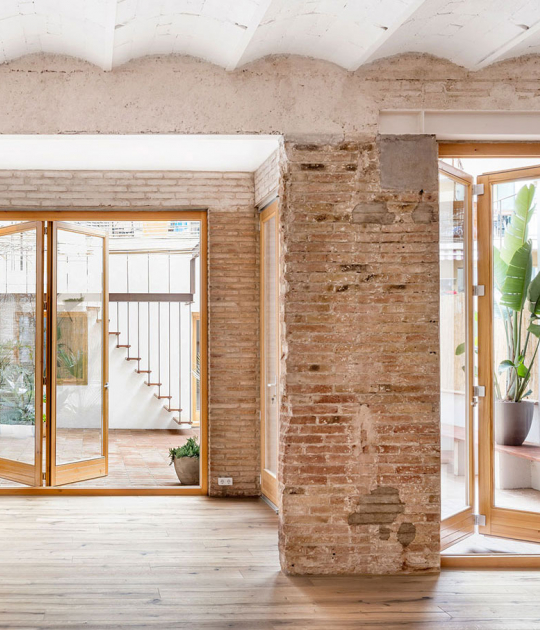The intervention carried out by Carles Enrich in the castle of Jorba, located at the top of Puig de la Guàrdia at Catalan region of Anoia, aims to facilitate the access to the watchtower, where the relationship with the town and the territory is recovered, highlighting its original lookout function that motivated its construction generating a new topography.
A minimal intervention, in fact it could be said that it is a project to clean up the existing remains. Obviously it is more than that, it is intelligence and an action that takes advantage of resources to put in value some remains over which time accumulates layers of oblivion.
Description of project by Carles Enrich
The remains of the Castle of Jorba, declared historical monument (BCIN), is located at the top of Puig de la Guàrdia (549m), forming a backdrop to the municipality of Jorba and a privileged point of observation of the Catalan region of Anoia. The whole castle represents a sedimentation of the different uses that it has acquired throughout the centuries. To the first construction, the mid-tenth century watchtower, was added a chapel, which later was part of a first walled enclosure in the 14th century. At the end of the 16th century, it expanded, assuming its maximum extension on the hill. In its last functional phase, the castle became a house, of which elements as an oven or a wine press are still visible.
The project is part of a Master Plan to enhance the collective awareness of the castle’s origin as a place for observing the former border territory of the March of Barcelona, a defensive barrier between Al-Andalus and Carolingian Empires, and for controlling the ancient route from Barcelona to Lleida.
Relationship with the site
The project located at the top at the height of 549 m, is carried out from the material obtained in the archaeological excavation, reused in order to build a new topography. The 300 m3 of extracted soil volume is used entirely to generate a sequence of platforms that expands and makes the route to the lookout safer.
An ascending step of 12 meters is proposed in 5 sections of two different widths adapting to the pre-existing conditions and following the structures that mark the castle’s limits. An old existing path is used as a route for the first two sections of the new access. The third section is perpendicular to the walls of the castle and offers a view of its north elevation. The last two sections have a development tangent to the main guideline of the walls and allow a direct contact with the archaeological remains. Once you reach the upper level you get a view of the village of Jorba and the old royal road.
New topography
The archaeological works allow to unearth structures of the different stages that are consolidated, reusing stones found in the excavation works, enabling the recovery of part of the castle’s extension, walls from the first phases of construction, as well as the circulation levels of the battlement. The stones recovered in the excavation unused for consolidating the most damaged structures are collected next to the path, waiting to be reused in later phases.
Due to the Access difficulties to the top of the hill the works have been carried out entirely by manual means and materials used were easily to handle and transport. A minimal intervention is proposed, understanding that the pre-existences of the castle and the landscape are the project. The new staircase consists of 20x12cm wooden slats, of two different widths (1.20 and 0.60 meters) optimizing the original pieces without generating waste of material. The access limits are drawn with a rope at 60cm in height, which indicates the route and the areas that can be visited, subjected on 8 corrugated rods of 12mm in diameter.






























































